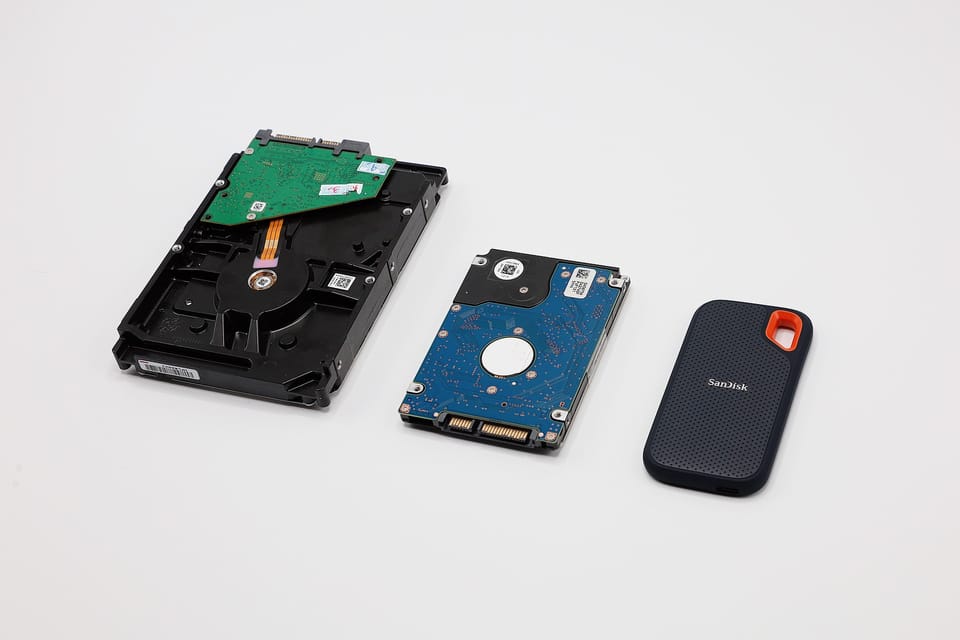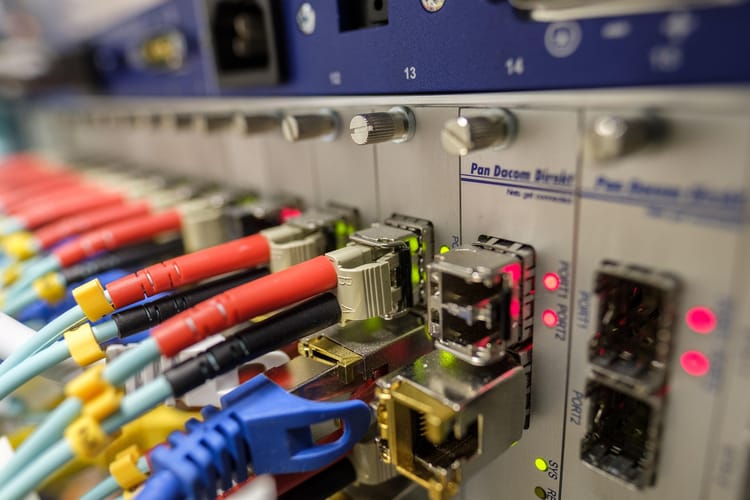Understanding Data Transfer Speeds: A Guide to Drives and Networks

Ever wondered why transferring files to your external hard drive feels like watching paint dry, while downloading a game on your new computer is lightning fast? The key lies in understanding data transfer speeds, a crucial factor in both your storage and networking hardware.
This article breaks down the most common transfer speeds for computer drives and network connections, providing a handy reference to help you make informed decisions.
Understanding Bits vs Bytes
Before we dive into the numbers, let's clarify a fundamental concept: bits (b) vs. bytes (B).
- Network speeds are almost always measured in megabits per second (Mbps) or gigabits per second (Gbps).
- Storage speeds are typically measured in megabytes per second (MB/s) or gigabytes per second (GB/s).
Remember this simple rule: 1 byte = 8 bits. This is why a 100 Mbps internet connection has a maximum download speed of only 12.5 MB/s (100 / 8 = 12.5). Knowing this will prevent confusion when comparing different types of speeds.
Data Transfer Speed Comparison Table
This table ranks common storage and networking technologies from slowest to fastest, showing their transfer rates in both Mbps and MB/s.
Type Transfer Rate (Mbps) Transfer Rate (MB/s)
---------------------------------------------------------------------
100 Mbit Ethernet 100 12.5
SATA Hard Drive (HDD) 800–2,000 100–250
1 Gbps Ethernet 1,000 125
2.5 Gbps Ethernet 2,500 312.5
SATA SSD 4,000–4,800 500–600
10 Gbps Ethernet 10,000 1,250
PCIe Gen3 NVMe SSD Up to 28,000 Up to 3,500
25 Gbps Ethernet 25,000 3,125
PCIe Gen4 NVMe SSD Up to 56,000 Up to 7,000
100 Gbps Ethernet 100,000 12,500
PCIe Gen5 NVMe SSD Up to 112,000 Up to 14,000Storage Speed Showdown: From HDD to NVMe
Storage devices are the heart of your computer, and their speed directly impacts performance.
Mechanical Hard Drives (HDDs)
These are the oldest and slowest storage drives, using spinning platters to read and write data. Their mechanical parts limit speeds to a fraction of a modern SSD. Their main benefit is low cost per gigabyte, making them ideal for mass storage.
- Average Sequential Read/Write Speed: 100 - 250 MB/s
Keep in mind that factors like the drive's RPM (revolutions per minute), the location of data on the platter, and whether the data transfer is sequential (large continuous files) or random (many small files) can affect these speeds. Higher RPM drives generally offer better performance.
SATA Solid State Drives (SSDs)
SSDs revolutionized storage by using flash memory instead of moving parts. This results in significantly faster speeds and improved responsiveness compared to HDDs. SATA SSDs utilize the same connection interface as traditional HDDs, which puts a ceiling on their potential speed.
- Average Sequential Read/Write Speed: ~600 MB/s (This is near the theoretical limit of the SATA III interface)
While much faster than HDDs, SATA SSDs are now being superseded by even speedier technologies.
NVMe SSDs
NVMe (Non-Volatile Memory Express) drives are the current champions of consumer storage speed. They are designed to leverage the PCIe (Peripheral Component Interconnect Express) bus, which offers a much higher bandwidth connection directly to the CPU. This bypasses the limitations of the SATA interface.
NVMe SSD performance varies depending on the generation of PCIe they support:
- PCIe Gen3 NVMe SSD: Average Sequential Read Speed ~3,500 MB/s
- PCIe Gen4 NVMe SSD: Average Sequential Read Speed ~7,000 MB/s
- PCIe Gen5 NVMe SSD: Average Sequential Read Speed ~14,000 MB/s (and beyond as the technology evolves)
NVMe drives offer a massive leap in performance, significantly reducing boot times, application loading times, and file transfer durations.
Network Speed Tiers
Your network connection speed dictates how quickly you can transfer data over a network, whether it's the internet or a local area network.
100 Mbit Ethernet: Theoretical Maximum ~12.5 MB/s.
- This is an older standard and is less common in modern setups.
1 Gigabit Ethernet (1 Gbps): Theoretical Maximum ~125 MB/s.
- This is the most common standard for home and small office networks.
2.5 Gigabit Ethernet (2.5 Gbps): Theoretical Maximum ~312.5 MB/s.
- This standard is becoming more common on motherboards and networking gear, as it offers a significant speed boost over standard Gigabit Ethernet without requiring an expensive upgrade to 10 Gbps hardware.
10 Gigabit Ethernet (10 Gbps): Theoretical Maximum ~1,250 MB/s.
- Increasingly found in higher-end setups and some modern home routers.
25 Gigabit Ethernet (25 Gbps): Theoretical Maximum ~3,125 MB/s.
- More common in enterprise environments and high-performance networking.
100 Gigabit Ethernet (100 Gbps): Theoretical Maximum ~12,500 MB/s.
- Primarily used in data centers and very high-bandwidth applications.
Keep in mind that these are theoretical maximums. Real-world network speeds can be affected by factors like network congestion, the capabilities of your networking equipment (routers, switches, cables), and the speed of the server or device you are communicating with.
Choosing the Right Speed for Your Needs
Understanding these transfer speeds is crucial when:
- Upgrading your computer: Choosing an NVMe SSD over a SATA drive will result in a noticeably faster and more responsive system.
- Building a home network: If you frequently transfer large files between devices, investing in 2.5 Gigabit or even 10 Gigabit Ethernet can significantly speed things up.
- Selecting internet service: Higher internet speeds allow for faster downloads, smoother streaming, and better online gaming experiences.
- Purchasing external storage: Consider how you'll be using the external drive. If you need to back up large files quickly, an external SSD will be much faster than a traditional external HDD.
By having a grasp of the typical data transfer speeds of different technologies, you can make more informed decisions to optimize your digital experience and ensure your hardware meets your performance expectations.


Comments ()